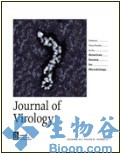
J Virol:人巨细胞病毒感染人神经干细胞初步研究获进展
发布时间 / 2014-02-26 / 5352
近期,中科院武汉病毒研究所罗敏华课题组在人神经干细胞体系的建立与人巨细胞病毒(HCMV)感染人神经干细胞初步研究中取得重要进展。相关结果发表于国际病毒学杂志Journal of Virology上。
先天性HCMV感染是导致出生缺陷的最常见病因,主要引起中枢神经系统(CNS)发育紊乱。先天性HCMV发生在早孕期,其后果常常比感染发生于孕晚期更严重,表现为严重脑损伤,包括小脑畸形等。胎脑中HCMV感染最常见区域为室管膜下区(SVZ),其中细胞的主要类型是神经干/前体细胞(NPCs)。因此,该课题组在体外重建HCMV感染的人神经干细胞(NPCs)模型,进一步研究和比较不同胚龄个体来源的NPCs HCMV感染,研究和比较体外长期培养对HCMV感染的影响发现,新分离的NPCs对HCMV感染是完全允许性;HCMV感染指标无明显差异,证明感染无个体差异。进一步研究和比较早期代数NPCs(9代内)和长时间培养后的晚期代数NPCs(11代以上)中HCMV感染特性,发现随着培养时间的推移,在晚期代数NPCs中CPE进展速度更快、释放更高水平病毒颗粒,伴有病毒基因表达水平改变;病毒侵入的效率更高。表明晚期代数的NPCs对HCMV的易感性更强。
在以往的研究中,研究者都是使用9代以内的NPCs进行研究HCMV的感染,并没有人具体研究过9代以后的NPCs对HCMV感染有何影响。本实验系统地研究了晚期代数和早期代数的NPCs对HCMV感染的差异,阐明了细胞形态、病毒基因表达、病毒颗粒释放的差异,并且基于这种差异进行了机理性研究,发现其可能与二者之间的NPCs分化状态和病毒受体的表达差异有关。本研究能够给临床研究提供理论基础,揭示在病毒感染后期,HCMV对胎脑的神经损伤更严重,因此对于感染HCMV的孕妇,要及时治疗。人神经干细胞的体外培养及其对HCMV的易感性研究无论对神经生物学、干细胞、HCMV的感染机制都具有重要价值,该研究得到了国家自然科学基金的支持。(生物谷Bioon.com)
生物谷推荐的英文摘要

Journal of Virology doi: 10.1128/JVI.01120-13
Later Passage Neural Progenitor Cells from Neonatal Brain Are More Permissive for Human Cytomegalovirus Infection
Xing Pan1, Xiao-Jun Li1, Xi-Juan Liu1, Hui Yuan2, Jia-Fu Li3, Ying-Liang Duan1, Han-Qing Ye1, Ya-Ru Fu1, Guan-Hua Qiao1, Cong-Cong Wu1, Bo Yang1, Xiao-Hui Tian1, Kang-Hong Hu1, Ling-Feng Miao1, Xiao-Ling Chen1, Jun Zheng4, Simon Rayner1, Philip H. Schwartz5, William J. Britt6, Jiang Xu4* and Min-Hua Luo1*
Congenital human cytomegalovirus (HCMV) infection is the most frequent infectious cause of birth defects, primarily neurological disorders. Neural progenitor/stem cells (NPCs) are the major cell type in the subventricular zone and are susceptible to HCMV infection. In culture, the differentiation status of NPCs may change with passage, which in turn may alter susceptibility to virus infection. Previously, only early passage (<passage 9) NPCs were studied and shown to be permissive to HCMV infection. In this study NPC cultures derived at different gestational ages were evaluated after short (passage 3-6) and extended (passage11-20) in vitro passage for biological and virological parameters (i.e. cell morphology, expression of NPC markers and HCMV receptors, viral entry efficiency, viral gene expression, virus-induced cytopathic effect, and release of infectious progeny). These parameters were not significantly influenced by gestational age of the source tissues. However, extended passage cultures showed evidence of differentiation, increased viral entry, and more efficient production of infectious progeny. These results confirm that NPCs are fully permissive for HCMV infection and extended passage NPCs are differentiated and more permissive for HCMV infection. Later passage NPCs being differentiated and more permissive for HCMV infection suggest that HCMV infection in fetal brain may cause more neural cell loss and give rise to severe neurological disabilities with advancing brain development.